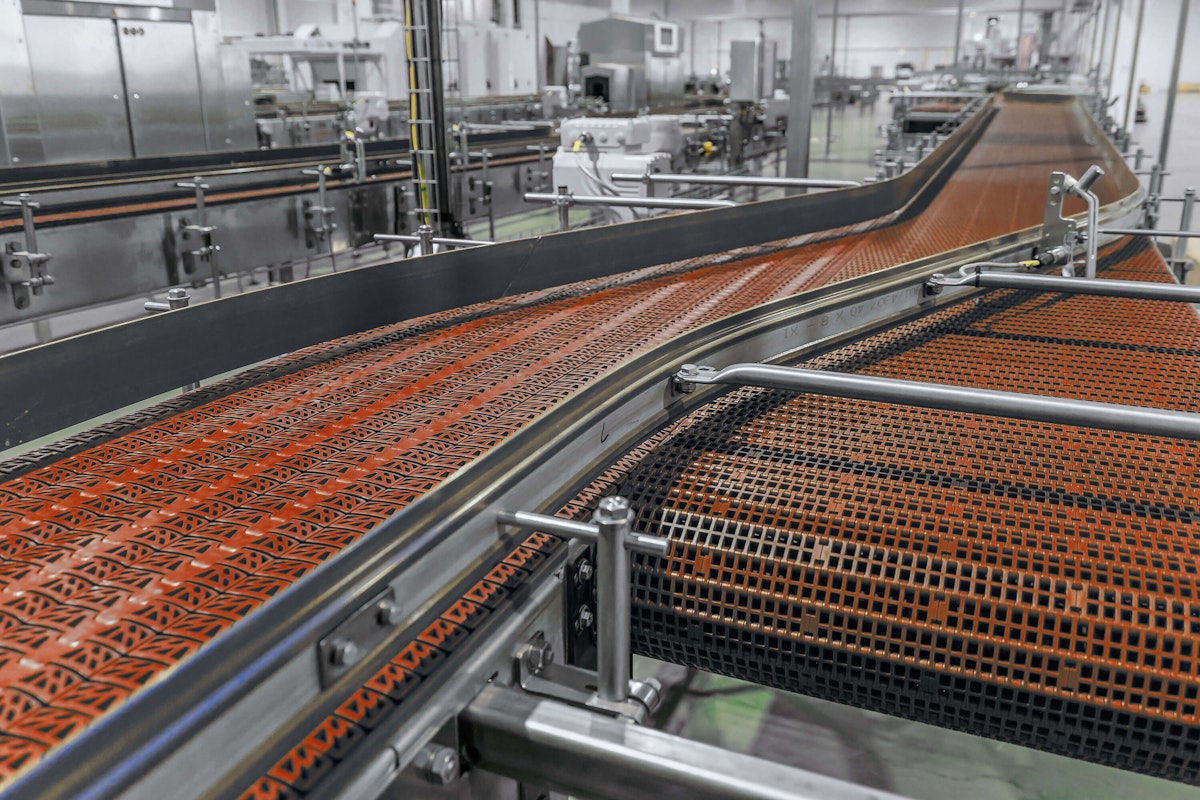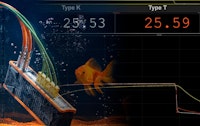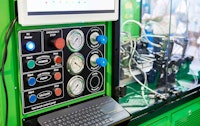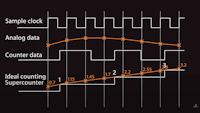Table of contents
Browse categories
Browse authors
 AB
ABAlberto Boffi
 AL
ALAlessia Longo
 AH
AHAl Hoge
 AB
ABAljaž Blažun
 BJ
BJBernard Jerman
 BČ
BČBojan Čontala
 CF
CFCarsten Frederiksen
 CS
CSCarsten Stjernfelt
 DC
DCDaniel Colmenares
 DF
DFDino Florjančič
 EB
EBEmanuele Burgognoni
 EK
EKEva Kalšek
 FB
FBFranck Beranger
 GR
GRGabriele Ribichini
Glacier Chen
 GS
GSGrant Maloy Smith
 HB
HBHelmut Behmüller
 IB
IBIza Burnik
 JO
JOJaka Ogorevc
 JR
JRJake Rosenthal
 JS
JSJernej Sirk
 JM
JMJohn Miller
 KM
KMKarla Yera Morales
 KD
KDKayla Day
 KS
KSKonrad Schweiger
Leslie Wang
 LS
LSLoïc Siret
 LJ
LJLuka Jerman
 MB
MBMarco Behmer
 MR
MRMarco Ribichini
 ML
MLMatic Lebar
 MS
MSMatjaž Strniša
 ME
MEMatthew Engquist
 ME
MEMichael Elmerick
 NP
NPNicolas Phan
 OM
OMOwen Maginity
 PF
PFPatrick Fu
 PR
PRPrimož Rome
 RM
RMRok Mesar
 RS
RSRupert Schwarz
 SA
SASamuele Ardizio
 SK
SKSimon Kodrič
 SG
SGSøren Linnet Gjelstrup
 TH
THThorsten Hartleb
 TV
TVTirin Varghese
 UK
UKUrban Kuhar
Valentino Pagliara
 VS
VSVid Selič
 WK
WKWill Kooiker
Industrial Condition Monitoring with Dewesoft

May 23, 2025
Condition monitoring is an increasingly important aspect of the modern industrial landscape. It saves money by identifying production problems before they occur, reducing downtime. It also promotes safety and enhances production equipment lifespans.

As machinery becomes increasingly expensive and complex, identifying and repairing problems becomes increasingly time-consuming. Condition monitoring solutions identify issues before they cause failures that lead to downtime. Condition monitoring allows maintenance personnel to perform preventive maintenance.
As Industry 4.0 moves toward Industry 5.0, intelligent condition monitoring becomes increasingly important. Integration with web-based and AI tools enables maintenance teams to spend more time preventing problems and less time fixing breakdowns, saving time and money.
Who uses condition monitoring?
Condition monitoring is used in many industries. In manufacturing, machinery, and equipment operate under rigorous conditions, making them susceptible to wear and tear. Condition monitoring is crucial for detecting issues in motors, blower fans, furnace temperatures, conveyor belts, and production lines. Many large manufacturing and processing facilities monitor essentially every device involved in production.
Oil and gas, wind, solar, and nuclear power producers rely on condition monitoring to maintain operational efficiency and safety in the energy sector. In wind turbines, condition monitoring systems track vibration and temperature to detect early bearing and gearbox failure signs. In oil and gas, monitoring the integrity of pipelines and drilling equipment prevents leaks and catastrophic failures.
Condition monitoring is heavily used in transportation, including railways, aviation, and automotive sectors. It ensures the safety and reliability of trains by monitoring wheel and track conditions. It assesses the health of aircraft engines and critical components, preventing failures. Car and truck manufacturers improve vehicle reliability and performance via condition monitoring and real-time diagnostics.
Mining operations involve heavy machinery like haul trucks, crushers, and conveyors. Harsh environments can lead to high failure rates unless the machines are checked continuously. Condition monitoring is also essential in civil engineering to assess the health of bridges, buildings, and other structures. Using structural health monitoring (SHM), engineers can detect cracks, corrosion, and other structural issues before they become failures.
Sample condition monitoring application
We constructed a scale model of a conveyor belt used in many processing facilities to demonstrate how Dewesoft hardware and software work together. Our conveyor belt is driven by a geared direct current (DC) motor and runs at a fixed speed. A Dewesoft IOLITE R8 configured with IOLITE 16xAO and IOLITE 8xDI 4xDO modules controls the conveyor. The IOLITE output module sends control signals to relays that activate the motor, reverse its direction, and control the conveyor’s status light.
We connected sensors to the IOLITE’s input modules. The IOLITE 6xSTG supports six channels of strain, voltage, current, and potentiometer readings, while the IOLITE 8xTH provides eight channels of thermocouple inputs for temperature readings. We used five thermocouples to read the temperature of various relays, the conveyor motor, and the ambient temperature.
An IOLITE 8xDI module provides eight digital input lines. One digital line monitors the status of a light-beam proximity sensor that detects objects on the conveyor belt. We also used a DS-CLAMP-150 Hall-Compensated Current Clamp to measure the motor current.
Control logic and localized displays are performed by DewesoftX software. DewesoftX displays the current status of the belt and allows the user to start and stop the belt via on-screen push buttons. This software includes a rich selection of user-programmable logic and math functions, so we created a software timer that prevents the belt from running without a load for longer than a set amount of time. We also created functions to stop the belt when an object is detected and to shut down the belt in the event of an overdraw of power or an over-temperature event on the motor.
Putting status lights on the screen and driving them from our logic functions is easy. DewesoftX software has many display widgets that can be added to the screen, including recorder and X-Y graphs, digital and analog meters, indicator lamps, and more.
To collect massive amounts of historical data, we used Dewesoft’s Historian software. We also used open-source Grafana software to visualize long-term historical data. Historian and Grafana are typically run on a network and accessed via the cloud, but for our small-scale test, we ran everything on the same local computer.
Conveyor belts are only the tip of the iceberg regarding condition monitoring. Dewesoft provides solutions to monitor everything from a bridge over a river to a locomotive racing across the desert to a 15-ton press on an assembly line. With hardware ranging from highly ruggedized to extremely high speed and inputs to support analog, digital (TTL and encoder), CAN, and other signals, Dewesoft hardware can be adapted to the application's needs.
Condition monitoring solutions
Dewesoft offers a full suite of industrial condition monitoring hardware.
KRYPTON line
The ruggedized KRYPTON series is used in challenging environments with sprays and gases, high shock and vibration, or extreme temperatures. KRYPTON is sealed against dust, water, and other particulates to an IP67 rating. Each module features 100g shock and high vibration ratings and operates from -40 ° to +85 °C (+185 °F). KRYPTON modules interconnect via a single EtherCAT cable that carries the digitized data, power, and synchronization. Single- and multi-channel KRYPTON modules are available.

IOLITE line
The less expensive IOLITE series provides KRYPTON’s measuring performance with typical industrial ruggedness specifications. IOLITE is offered in an 8-slot fanned or fanless chassis, a 12-slot chassis made for 19-inch rack-mounting, and DIN rail-mountable single and multi-channel modules. It is an excellent solution for permanent high-channel-count applications such as assembly lines, presses, and HVAC systems.
All Dewesoft series include signal conditioning modules that handle all significant signals and sensors: low and high voltage, low and high current, temperature (RTD and thermocouples), pressure, force, displacement, strain, pressure, acceleration, vibration, angle-based measurements from encoders, counters, tachometers, and more.
Dewesoft offers MEMS-based instruments that interconnect via EtherCAT for data, control, and synchronization. IOLITE 3xMEMS is a tri-axial accelerometer and inclinometer used for structural monitoring. IOLITE 2xASI provides two tri-axial accelerometers and a tachometer input for monitoring vibration on fans, compressors, pumps, motors, and other rotating machinery.


SIRIUS line
For high-speed measurements, the SIRIUS line offers speeds of up to 15 MS/s for monitoring power quality on motors, transformers, inverters, and more. The amplifiers can also be customized to suit the needs of an individual application. SIRIUS has several different ADC configurations, including the classic DualCore ADC that provides high dynamic ranges and 24-bit sampling up to 200 kS/s per channel.
SIRIUS XHS is the highest-speed model, sampling up to 15 MS/s and a 5 MHz bandwidth. SIRIUS X models feature onboard processing via an embedded ARM processor running LINUX and DewesoftRT software. In addition to modular form factors, SIRIUS is also available as an instrument with a built-in computer, display, keyboard, and SSD data storage.

OBSIDIAN line
The OBSIDIAN line was created to perform long-term, unattended data acquisition. OBSIDIAN is powered by a low-energy ARM-based CPU on a LINUX® architecture. It can be a standalone data logger, real-time control system, and signal conditioning frontend.
The entire range of IOLITE signal amplifiers can be used, so OBSIDIAN is compatible with all significant signal and sensor types, including voltage, current, IEPE accelerometers, thermocouples, RTDs, strain gauges, load cells, and more. OBSIDIAN runs DewesoftRT embedded software, which can be controlled over the network or via the DewesoftM smartphone and tablet app. The R8w model features shock and vibration ratings up to 75 g, IP67 protection against water, dust, and smoke, and a MIL-810F environmental rating.

Condition monitoring software
Condition monitoring software is essential for analyzing data from various sensors and predicting equipment failures. Dewesoft offers integrated DAQ and monitoring software that acquires real-time data from their entire product ecosystem and openDAQ compliant instruments and uploads them to a cloud-based database.
DewesoftX software provides the tools needed to collect and analyze the data to make decisions about the status of machinery, structures, and more. DewesoftX provided everything from range checking and triggered recording to the most advanced torsional vibration machinery analysis. It is highly flexible and can communicate with third-party systems, such as SCADA systems and SQL databases, via plugins such as OPC UA, Modbus, and ODE (Online Data Export) to send data directly to pre-existing database and control systems.
DewesoftX can even send email alerts when an alarm is triggered, notifying personnel of an issue the moment it occurs. For applications requiring custom processing, it is also possible to code in C++ to create a custom plugin that runs inside DewesoftX or read data into a Python script.
DewesoftX has the tools to visualize data through a series of drag-and-drop widgets, including charts, scopes, digital meters, and indicator lamps. Creating one or more system status screens for real-time monitoring is easy. You can even connect DirectX and GigE cameras and record video in sync with the data. This visual documentation shows the data in a new light and provides context to the numbers.
For large-scale deployments, the DewesoftX NET option allows multiple systems to be interconnected even over great distances and operated as one. If the measurement units are connected and visible on a standard TCP/IP network, users can easily control and store data to or from a remote location.
The Dewesoft NET option serves as a hub for distributed data acquisition. Multiple measurement systems can be combined and synchronized. DAQ systems can be located together or scattered across an entire continent. Data can be stored remotely or locally and accessed anywhere on the network.
DewesoftX software records data from a wide array of different data interfaces:
analog sensors,
digital sensors,
video cameras,
infrared and high-speed cameras,
GNSS receivers,
CAN bus,
XCP/CCP bus,
Flexray bus,
Ethernet,
OPC UA,
Siemens S7,
serial data, and
more.
It features a graphical user interface with a short learning curve. DewesoftX includes more than 35 display widgets that the user can freely customize. These include recorder graphs, scopes, analog and digital meters, FFT diagrams, advanced 3D graphs, histograms, waterfall displays, and interactive maps. There are no licensing or maintenance fees, and all upgrades are included at no cost for the system's life.
For database storage and access, Historian software enables reliable data transfer from multiple measurement units into a time-series database hosted on a custom private server or in a cloud. The data can be accessed through a web browser on any device (desktop, tablet, mobile) or via DewesoftX software.
Measurement units running DewesoftX software communicate via the MQTT protocol with the Historian database. On the server side, an MQTT broker temporarily holds the data published by Historian clients running on the Measurement units and serves the data to the Historian client subscribers. Historian’s state-of-the-art time-series database is based on the InfluxDB open-source project. Time-series databases were explicitly developed for long-term monitoring projects with significant data rates.
For visualization of long-term data, the web client is based on open-source Grafana. Grafana is accessible on Windows, Linux, Mac OS, tablets, and smartphones. Grafana provides comprehensive visualization capabilities for trend data and live values. Dewesoft developed 2D channel visualization extensions for Grafana to display FFTs and high-speed waveform scope shots.


Additional software solutions are available for specific applications, including vibration analysis, thermal and infrared imaging, oil analysis, acoustic emission, ultrasonic testing, pressure and flow, SCADA, and predictive maintenance software.
These software solutions enable continuous monitoring, data analysis, and predictive maintenance, helping to improve equipment reliability, reduce downtime, and optimize maintenance activities.
Condition monitoring sensors
A wide variety of sensors are used in condition monitoring.
Vibration sensors
Irregular vibrations indicate potential mechanical issues, such as imbalance, which can lead to machine failure. Analog and MEMS-based accelerometers are widely used to measure vibration.

Temperature sensors
Temperature is the most widely measured physical property in the world. Temperature indicates the state of a machine. Higher than expected temperatures often indicate overheating and other problems. The most common types include thermocouples, RTDs, and thermistors.

Pressure sensors
Pressure variations indicate leaks or blockages that must be corrected to ensure proper operation. Various technologies are used in pressure sensors, including strain gauge, capacitive, piezoelectric, piezoresistive, resonant, optical, and inductive.
Ultrasonic sensors
Ultrasonic sensors “listen” to sound to identify issues like gas leaks or mechanical wear. They can also detect and locate gas leaks by detecting the ultrasonic sound waves the escaping gas produces and measuring proximity and distance.
Acoustic emission sensors
Resonant acoustic emission sensors capture high-frequency waves generated by cracks or material failures. Wideband AE sensors capture a broad range of frequencies and are used for general-purpose monitoring and fault detection in various materials and structures. Several other variations are available for specific applications and installation requirements.
Humidity sensors
Monitoring moisture levels prevents damage from condensation or leaks. Humidity sensors use various technologies, including capacitive, resistive, thermal conductivity, optical, and gravimetric, each suitable for different applications.
Speed sensors
Measuring the rotational speed of machinery parts is essential for detecting misalignment or wear. Speed sensors employ various technologies, including optical encoders, magnetic speed sensors, Hall Effect, tachometers, and inductive sensors.
Proximity sensors
Measuring the distance between a fixed point and an object or between two or more moving objects is essential in many process control applications. Depending on the specific proximity measurement application, various technologies are used, including inductive, capacitive, ultrasonic, photoelectric, magnetic, and laser.
Oil quality sensors
These sensors help monitor and maintain oil quality, ensuring the efficient and reliable operation of machinery by detecting potential issues early. Various oil-quality sensors are available for distinct applications, including viscosity, dielectric, particle counting, water content, conductivity, optical, acidity, and density.
Process sensors
Process sensors measure variables in industrial and manufacturing processes, especially when liquids and gasses are present. They are typically used to measure temperature, system pressure, hydrostatic pressure, flow rate, flow quantity, and fill levels in tanks and other containers.
The future of condition monitoring
The future of condition monitoring is poised for significant advancements driven by technological innovations and the increasing demand for efficiency and reliability. Several trends are expected to shape the future landscape of condition monitoring:
Integration with IoT and Industry 4.0
The integration of condition monitoring with the Internet of Things (IoT) and Industry 4.0 technologies will revolutionize the field. IoT-enabled condition monitoring sensors will provide real-time data from machinery, enabling continuous monitoring and analysis. This interconnected ecosystem will allow for more accurate predictions and proactive maintenance strategies.
Artificial intelligence and machine learning
Artificial intelligence (AI) and machine learning (ML) will play a crucial role in the evolution of condition monitoring. AI algorithms can analyze vast amounts of data to identify patterns and anomalies that may indicate potential issues. Machine learning models can continuously improve predictive accuracy by learning from historical data and new inputs.
Advanced analytics and big data
The increasing data availability from condition monitoring systems will drive the need for advanced analytics and big data solutions. Companies will leverage data analytics tools to gain deeper insights into equipment health, optimize maintenance schedules, and enhance decision-making processes.
Remote monitoring and cloud computing
With cloud computing, remote monitoring capabilities will enable companies to monitor equipment health worldwide. Cloud-based platforms will store and analyze data, providing real-time insights and alerts. This will particularly benefit industries with geographically dispersed assets, such as wind farms and oil rigs.
Augmented reality (AR) and virtual reality (VR)
AR and VR technologies will transform maintenance programs. Technicians with AR glasses can receive real-time data and guidance while performing maintenance tasks. VR simulations can be used for training, allowing technicians to practice complex procedures in a virtual environment.
Predictive and prescriptive maintenance
We will see a shift from predictive to prescriptive maintenance in the future. While predictive maintenance forecasts potential failures, prescriptive maintenance recommends specific actions to prevent those failures. This proactive approach will optimize maintenance strategies and improve overall asset management.
Sustainability and environmental impact
Condition monitoring will be critical in promoting sustainability and reducing environmental impact. Companies can minimize waste and energy consumption by optimizing equipment performance and lifespan. Early detection of leaks and emissions will also help prevent pollution and ensure regulation compliance.
The benefits of condition monitoring
Condition monitoring is an indispensable tool for industries that rely on the optimal performance of machinery and equipment. It provides substantial benefits and cost savings by enabling predictive maintenance, identifying potential issues, reducing machine failures, preventing unplanned downtimes, lowering maintenance costs, enhancing operational efficiency, and enhancing safety.
As technology evolves, implementing condition monitoring will be easier and more cost-effective. Advancements in IoT, AI, and data analytics will improve the return on investment even further. Embracing these innovations will allow industries to achieve higher reliability, efficiency, and sustainability levels in their operations.

